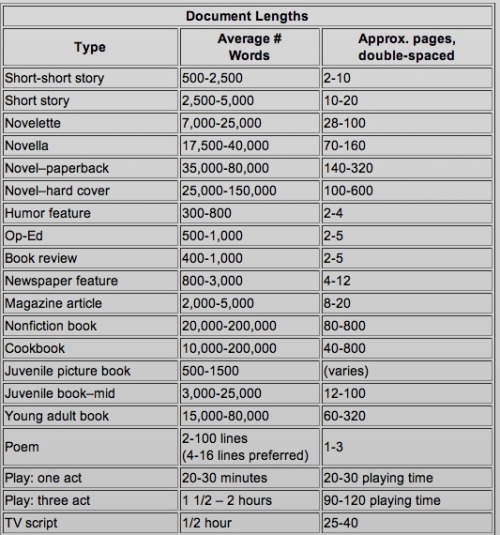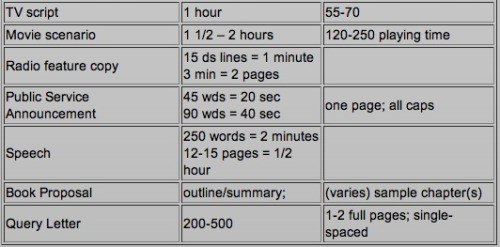Genre & Tone
Writing Theory: Controlling the Pace

Pacing is basically the speed of which the action in your story unfolds. Pacing keeps the reader hooked, helps to regulate the flow of the story and sets the tone of the entire book. So how can we write it?
Genre & Tone

Really in any novel the reader has an expectation that the book will be fast paced or slow. Readers will go into an action novel, expecting it to be fast paced. Readers will pick up a romance novel and expect it to follow a steadying climb of pace as the story goes on.
Pace is a good indicator of how the story is going to feel. If you want your readers to feel as if they are in a calm environment, you don't place the events immediately one after the other. If you want your readers to feel some adrenaline, you keep the curveball coming.
How to utilise Pacing successfully
1. Give your readers time to recover

When readers are reading a fast-paced novel, they need a breather and so do you and your characters. By peppering in a few moments between peaks of fast pace, you are allowing your readers to swallow down what they've just read and allows you to explore it further. Consider this like the bottle of water after a run. You need it or you'll collapse.
2. Track Events Carefully

When planning your book's outline or at least having a vague idea of it, you have a fair idea when things are going to happen. Usually books have an arc where pace gets faster and faster until you get to the climax where it generally slows down. If you're writing a larger book, you have to space out your pacing properly or else your reader will fall into a valley of boredom or find the book a bumpy ride. The climax should have the fastest pace - even if you start off at a high pace. Your story always should peak at the climax.
3. Localising Pace

If you want to put your reader into a certain state of mind throughout a chapter or even a paragraph, pay close attention to your sentence bulk. Long flowy sentences but the reader at ease, slowing the pace for them. Short, jabby sentences speed things up. An argument or a scene with action should be quick. A stroll through a meadow on a lazy summer's noon should be slow.
4. Information is Key

When writing pace in your overall novel, the reader should be given more information as you go through the story. You begin any story estentially with the who, what, where of everything. But peppering in all the whys, you broaden the story and keep the reader feeling more able to keep up with everything. For example, in any murder mystery your reader is given the body. As the story goes on, your reader should be given more and more information such as the weapon, the where until you get to the climax.
5. Off/On Stage

All events of the story do not need to be shown on stage. When you want to slow things down, allow things to happen away from the readers view. If you show event after event at your readers, everything is at a faster pace.
More Posts from Justanothergirlsblog and Others
Here’s a tip! If you want to have girl power in your series or movie, normalize women.
Girl power shouldn’t be about proving that women can do things the same or better than men even if they are women! Girl power should be about women being equal to men and not diminished for being a girl.
Avoid having the male characters get surprised that she’s a women, avoid them saying things like “She’s a woman, but she’s strong!” or “Holy shit she’s a woman!?” or “Don’t be too tough on the woman!”. Those kinds of behaviors make it seem that it is surprising for a female person to be strong and/or independant. Equality is women getting treated the same as the men, not having people be surprised that she can do all those martial arts while being a woman! Wether the character is male, female, or non-binary, they should be treated socially equal regardless of their gender!
Slashing Your Word Count
A guide for over-writers.
So there I was, sitting in front of my 120,000 word YA Fantasy manuscript having a breakdown. Why? you ask. Well, because I want to be traditionally published and no one will buy a YA debut that long.
Why not? This answer would a post on its own. Or a 24 minute video. Luckily Alexa Donne has already done that work and you can watch it here.
Now I’m going to summarise all the advice I was given that had lead to me doing a brutally cut down draft in two sections, the big cuts, macro level, and the small cuts, micro level.
Micro Level Cuts
Reduce each description by 1 or 2 words - @coffee_loving_artist
Reduce dialogue. Single spoken words can carry more emotional weight than elongated lines.
Cut down on dialogue and action tags. If it’s clear who is speaking, don’t use anything! - @parisandherbooks
Cut repeated sentences. It’s not as dramatic as you think it is.
Simplify convoluted sentences - @jade_d_brown
Cut words like very, quite, sort of, kind of, it was, there was, that, now, then, suddenly and any crutch words you have - @just.a_simple_writer
Change passive language - @laurenkayzles
Macros Level Cuts
Chop off the beginning and the end of long scenes.
Cut info dumps
Never get lost in internal monologue. Keep it to a small para at most.
Cut fluff scenes - @teen_writing_101 & @cakeyboy
It doesn’t take 1000 words to make a small point – condense it!!
Cut unnecessary dialogue or chit chat
Merge scenes that feel repetitive
Cut the prologue
Cut the epilogue
(Remember that those can go back in after your book has been bought)
If you’re desperate, delete a POV - @thewritingfirebird
Ask your Beta’s which subplots/characters could go - @howwhyandsowhat
[If reposting to instagram please credit @isabellestonebooks]
Writing Tip #211
Short stories are a great way to learn writing. They’re short commitments, so if it fails, it’s ok you’ve only lost 3 days and your next attempt will be better.



“Start writing, no matter what. The water does not flow until the faucet is turned on.”
— Louis L'Amour (via quotemadness)


I wanted to double check that “The Cherry on Top” was a short novel or novella and I found this on uphillwriting.org. I think it’s very informative and hopefully you guys will find it useful!
“It’s amazing how much distance one truth can create between two people.”
— Colleen Hoover (via quotemadness)
“Please be stronger than your past. The future may still give you a chance.”
— George Michael
-
 guidetothegaylaxy liked this · 1 month ago
guidetothegaylaxy liked this · 1 month ago -
 chiseplushie reblogged this · 1 month ago
chiseplushie reblogged this · 1 month ago -
 convictshipcaptain liked this · 3 months ago
convictshipcaptain liked this · 3 months ago -
 heckcareoxytwit liked this · 4 months ago
heckcareoxytwit liked this · 4 months ago -
 squidlingbeing liked this · 6 months ago
squidlingbeing liked this · 6 months ago -
 breneli0-asoiaf-lover liked this · 6 months ago
breneli0-asoiaf-lover liked this · 6 months ago -
 suzerainoflegend reblogged this · 8 months ago
suzerainoflegend reblogged this · 8 months ago -
 suzerainoflegend liked this · 8 months ago
suzerainoflegend liked this · 8 months ago -
 lareineetoile liked this · 9 months ago
lareineetoile liked this · 9 months ago -
 iridescentpen reblogged this · 9 months ago
iridescentpen reblogged this · 9 months ago -
 martenvoss reblogged this · 9 months ago
martenvoss reblogged this · 9 months ago -
 write-101 reblogged this · 10 months ago
write-101 reblogged this · 10 months ago -
 dreamjhaniyasblog liked this · 10 months ago
dreamjhaniyasblog liked this · 10 months ago -
 abigail-rose-sims liked this · 11 months ago
abigail-rose-sims liked this · 11 months ago -
 ilikefelines reblogged this · 11 months ago
ilikefelines reblogged this · 11 months ago -
 wwhatev3r liked this · 11 months ago
wwhatev3r liked this · 11 months ago -
 ilikefelines reblogged this · 1 year ago
ilikefelines reblogged this · 1 year ago -
 ilikefelines liked this · 1 year ago
ilikefelines liked this · 1 year ago -
 aaustinwrites reblogged this · 1 year ago
aaustinwrites reblogged this · 1 year ago -
 martialwriter liked this · 1 year ago
martialwriter liked this · 1 year ago -
 jasshands liked this · 1 year ago
jasshands liked this · 1 year ago -
 heckcareoxytwit reblogged this · 1 year ago
heckcareoxytwit reblogged this · 1 year ago -
 typicaltumble liked this · 1 year ago
typicaltumble liked this · 1 year ago -
 thegothicviking reblogged this · 1 year ago
thegothicviking reblogged this · 1 year ago -
 pandorasboxofmusings liked this · 1 year ago
pandorasboxofmusings liked this · 1 year ago -
 ruhele liked this · 1 year ago
ruhele liked this · 1 year ago -
 shinyfoxchaos liked this · 1 year ago
shinyfoxchaos liked this · 1 year ago -
 ladymischievous liked this · 1 year ago
ladymischievous liked this · 1 year ago -
 i-love-books-because-reasons liked this · 1 year ago
i-love-books-because-reasons liked this · 1 year ago -
 tiredratking liked this · 1 year ago
tiredratking liked this · 1 year ago -
 sadpanda1551 reblogged this · 1 year ago
sadpanda1551 reblogged this · 1 year ago -
 sadpanda1551 liked this · 1 year ago
sadpanda1551 liked this · 1 year ago -
 rouge-vixen579 liked this · 1 year ago
rouge-vixen579 liked this · 1 year ago -
 thebyronic-heroine liked this · 1 year ago
thebyronic-heroine liked this · 1 year ago -
 raensposts liked this · 1 year ago
raensposts liked this · 1 year ago -
 chocolaspring liked this · 2 years ago
chocolaspring liked this · 2 years ago -
 elecballoon liked this · 2 years ago
elecballoon liked this · 2 years ago -
 purielliot liked this · 2 years ago
purielliot liked this · 2 years ago -
 shoheisehun liked this · 2 years ago
shoheisehun liked this · 2 years ago -
 mayonnaisepudding liked this · 2 years ago
mayonnaisepudding liked this · 2 years ago -
 whatiswriting reblogged this · 2 years ago
whatiswriting reblogged this · 2 years ago -
 vesper-roux reblogged this · 2 years ago
vesper-roux reblogged this · 2 years ago -
 bethanysnow liked this · 2 years ago
bethanysnow liked this · 2 years ago -
 ttime42 reblogged this · 2 years ago
ttime42 reblogged this · 2 years ago -
 timetrickster liked this · 2 years ago
timetrickster liked this · 2 years ago

I'm just a weird girl who likes to read about history, mythology and feminism.
207 posts